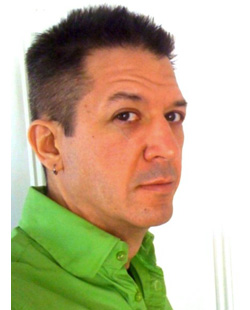
I stumbled into my career. I started working as a "consulting scientist” while waiting to defend my Ph.D. thesis. I had a knack for helping customers distinguish between what they really need and what they think they want. The customers’ needs, not all of which are technical, become additional input and output requirements when solving their problems. I then give them technical advice in terms that they understand. My angle proved to be successful, and within a few months, my gig as a consulting scientist turned into a full-time job.
Making a transition.
Last year I made a career change from full-time scientist to full-time undergraduate professor. Some colleagues were concerned that I wouldn’t like the change in the scope of my work. However, I’m actually doing the same thing: I evaluate what my students need and then give them technical instruction in terms that they can understand. Sure, generating 15 hours of lecture material every week is demanding, to say the least, but it lines up with what I’m best at. I enjoy it immensely.
Adjusting to authority.
The culture shock came from an unexpected quarter: having a boss—four layers of them, to be exact. As a professor, I have immediate responsibilities to the department chair, the dean, the vice president and the president of the college. Separately, I must also answer to the people who control the way the college uses its money, time and facilities. That all adds up to a lot of bureaucracy. For example, I discovered this semester that having pizza delivered to campus, while not technically impossible, requires a purchase order, two weeks’ notice, and a variance for not using the on-campus cafeteria. After a while, I started to feel like I was trapped in an invisible mesh of rules designed to stop me from getting things done.
Creating a customer.
My solution came from a change in perspective. I have learned to view the college as my customer. This is not a stretch—they are paying me to do something, which is the definition of a customer/vendor relationship. I am still mindful of requests and demands from folks up the authority chain, but now I take a step back and separate what they request from what they need. I make sure I understand the real problem, and then I let my engineering brain solve it within the allowed parameters. This has two advantages: It is more intellectually fulfilling for me, and it produces more effective results. In learning to shift my view and cut to the heart of the matter, I have reduced extraneous demands on my attention … leaving more time to grade the four-inch stack of lab reports, homework assignments and exams on my desk.
Damon Diehl (ddiehl4@monroecc.edu) is an assistant professor and program coordinator of Optical Systems Technology at Monroe Community College in Rochester, N.Y., U.S.A. He is also the founder and owner of Diehl Research Grant Services.
